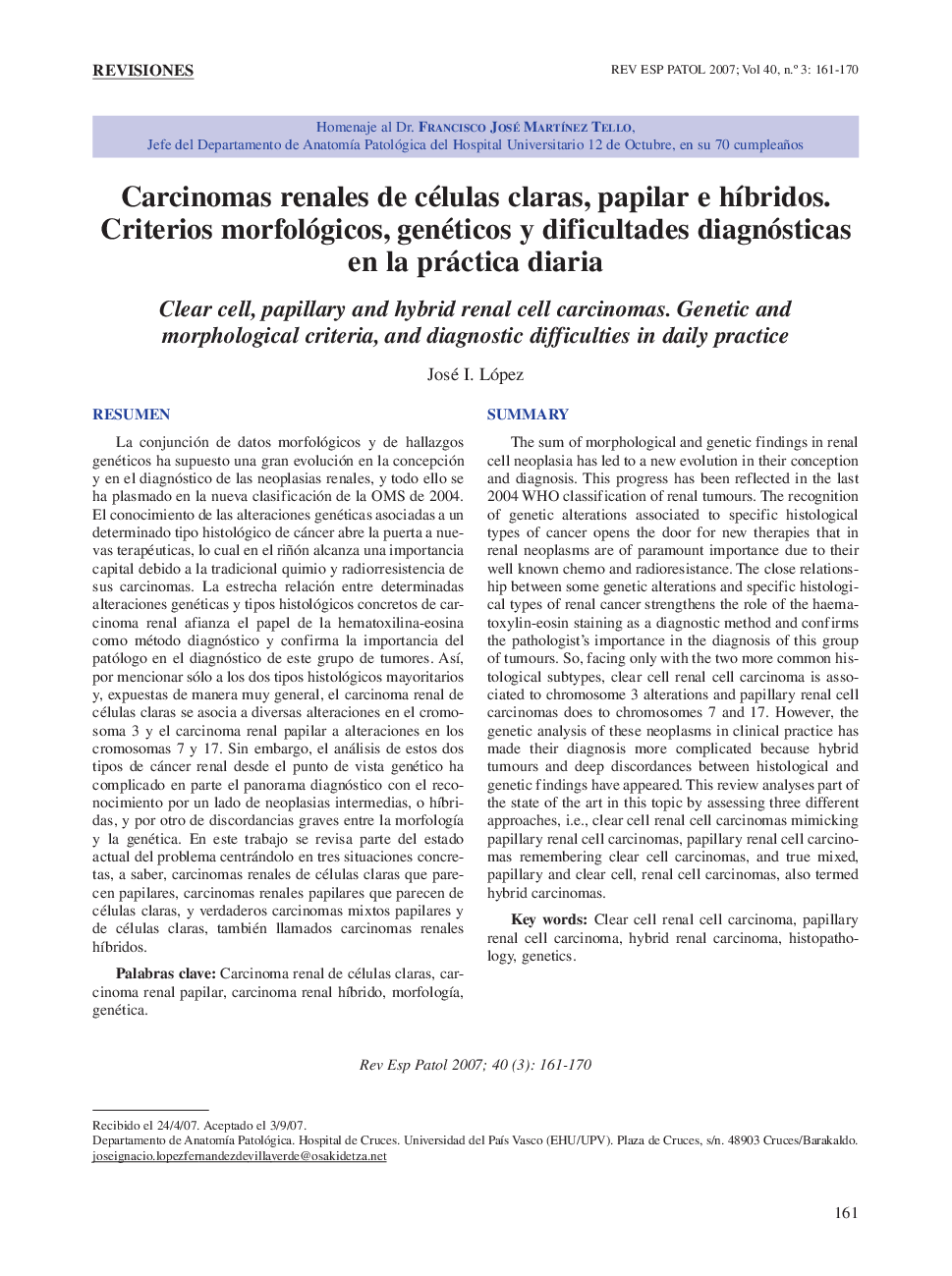| Article ID | Journal | Published Year | Pages | File Type |
|---|---|---|---|---|
| 4138038 | Revista Española de Patología | 2007 | 10 Pages |
Abstract
The sum of morphological and genetic findings in renal cell neoplasia has led to a new evolution in their conception and diagnosis. This progress has been reflected in the last 2004 WHO classification of renal tumours. The recognition of genetic alterations associated to specific histological types of cancer opens the door for new therapies that in renal neoplasms are of paramount importance due to their well known chemo and radioresistance. The close relationship between some genetic alterations and specific histological types of renal cancer strengthens the role of the haematoxylin-eosin staining as a diagnostic method and confirms the pathologist's importance in the diagnosis of this group of tumours. So, facing only with the two more common histological subtypes, clear cell renal cell carcinoma is associated to chromosome 3 alterations and papillary renal cell carcinomas does to chromosomes 7 and 17. However, the genetic analysis of these neoplasms in clinical practice has made their diagnosis more complicated because hybrid tumours and deep discordances between histological and genetic findings have appeared. This review analyses part of the state of the art in this topic by assessing three different approaches, i.e., clear cell renal cell carcinomas mimicking papillary renal cell carcinomas, papillary renal cell carcinomas remembering clear cell carcinomas, and true mixed, papillary and clear cell, renal cell carcinomas, also termed hybrid carcinomas.
Keywords
Related Topics
Health Sciences
Medicine and Dentistry
Pathology and Medical Technology
Authors
José I. López,
